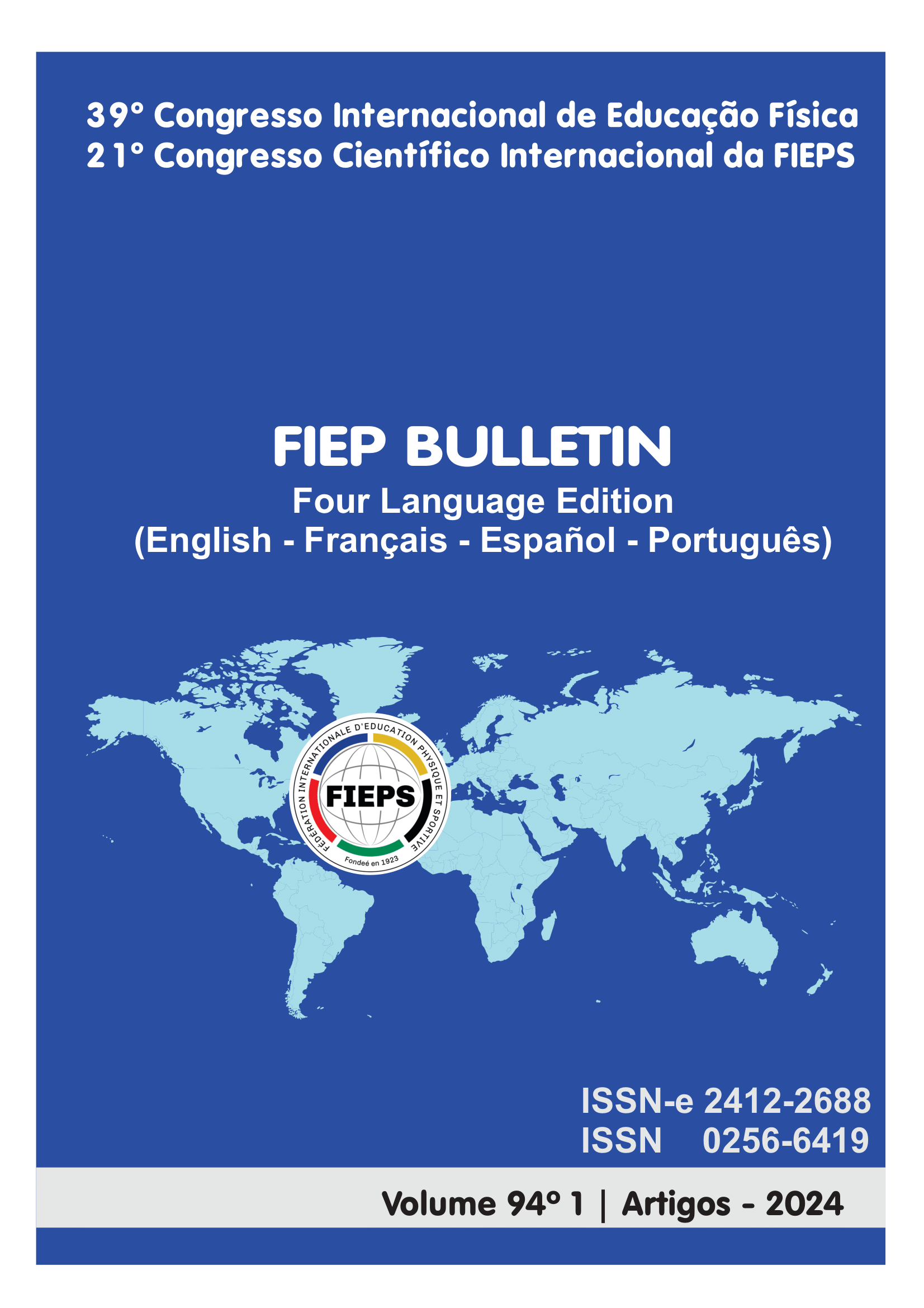ATHLETICS BREAKING SCHOOL SPORTS HEGEMONY
DOI:
https://doi.org/10.16887/fiepbulletin.v94i1.6807Abstract
Introduction: This article presents the results of a Project from the Human Motricity Research and Studies Laboratory – LPEMH-UEA, approved by CEP-UEA- with technical advice N: 5,608,528, which aimed to implement the brand sport ATLETISM, in Physical Education classes School as an alternative to sports offered and practiced in schools. Methodology: It was an experimental action research (GIL, 2007), with a mixed approach (CRESWELL, 2009). which taught the motor learning of this sport to 60 high school students, aged between 14 and 17, from CETI- Maria Izabel Ferreira Xavier Desterro e Silva, in Iranduba-AM. Track events were used: 100 m and 400 m sprint races with hurdles and field events: pole and triple jumps, shot put and discus, javelin and hammer throwing. Unrestricted "fair play" was encouraged. The data collection instruments were: participant observation, questionnaires and semi-structured interviews, tournaments (single knockouts) and championship (rotation system). Qualitative data was analyzed using content analysis by Bardin (2011) and the Likert scale (5 points) to quantify the answers given by interviewees. And the quantitative data were subjected to descriptive statistical analysis. Classes took place twice a week, for 1 hour, over the 12-month period, August 2022 to July 2023. Results: The data in the graphs show that the inclusion of athletics in school Physical Education classes is plausible. Conclusion: A new sporting experience in physical education classes broke the school sporting hegemony and brought significant changes to the school scenario.Keywords: Physical Education, Athletics, sports hegemony, students, high school.
Downloads
Downloads
Published
Issue
Section
License
Autores que publicam nesta revista concordam com os seguintes termos:- Autores mantém os direitos autorais e concedem à revista o direito de primeira publicação, com o trabalho simultaneamente licenciado sob a Licença Creative Commons Attribution que permite o compartilhamento do trabalho com reconhecimento da autoria e publicação inicial nesta revista.
- Autores têm autorização para assumir contratos adicionais separadamente, para distribuição não-exclusiva da versão do trabalho publicada nesta revista (ex.: publicar em repositório institucional ou como capítulo de livro), com reconhecimento de autoria e publicação inicial nesta revista.
- Autores têm permissão e são estimulados a publicar e distribuir seu trabalho online (ex.: em repositórios institucionais ou na sua página pessoal) a qualquer ponto antes ou durante o processo editorial, já que isso pode gerar alterações produtivas, bem como aumentar o impacto e a citação do trabalho publicado (Veja O Efeito do Acesso Livre).










